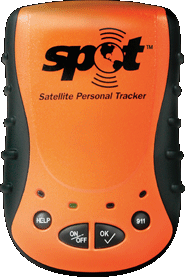Flying over the Grand Canyon is an amazing experience. Luckily, it is right on our path between Colorado and Southern California and we like going to Southern California. Navigating over the it with the special rules may sound like more hassle than it is worth, but it is pretty easy in the end if you have a GPS.
The Sectional and Grand Canyon VFR Maps
The first thing you look at is the Las Vegas Sectional, but it does not have much information on it except to avoid the entire area. Below is a snapshot. But the situation is not that bad.
The next step is to buy the Grand Canyon VFR chart or at least look at it on-line with Skyvector.com. Below is a snapshot. The main areas you have to avoid are in purple unless you are at or above 14,500 MSL. If you avoid the purple areas, you can be much lower. You basically have to stay above the rim of the canyon. The altitudes you cannot go are marked somewhat similar to how it is marked on a Class Bravo area. You also should try to be at least 2000' AGL since you are over a National Park. I wish some of this information was included on the sectional chart.
The commercial traffic is allowed to go lower and below the rim. This is a little annoying that non-commercial GA traffic does not have the option, but it does separate the commercial and non-commercial traffic well. I monitor the advisory frequency of 127.05Mhz and have only heard the commercial traffic when I have flown through. So I have had no other traffic at might level while enjoying the scenery.
The Grand Canyon Corridors
There are specific spots you can cross the canyon between the purple spots. These are labeled as the Grand Canyon VFR Corridors. I have highlighted them below with green lines. The beginning and end of these green lines are described with GPS coordinates, so it makes it easy to find the beginning and end as long as you have at least a handheld GPS. When you go across these corridors, make sure you are at the appropriate altitude for you direction on the corridor. The altitudes are marked on the map.
Modifying My Route for the Grand Canyon
On the last trip, I need to go from Page, AZ (KPGA) to Laughlin/Bullhead, AZ (KIFP). Below is the picture of the direct route. If I looked at the sectional, I might be make a big loop around the Grand Canyon. Looking at the Grand Canyon VFR chart, it looks like I could just about make the route without crossing the purple. But I would not maximize my fun over the Grand Canyon.
So below is what I modified the route to. See how I used the end points of the corridors to help with the path and maximize the time near the Grand Canyon. My first time over the Grand Canyon, I went over 1 or 2 more of the corridors to get more of the experience. But that was easier that time because Grand Canyon airport (KGCN) was my final destination and that was the purpose of the trip.
For this trip, I first gained altitude outside the special areas to over 8000', then kept climbing over the Marble Canyon area to above 10,000', then went to the north point of the Zuni Point Corridor (36°17.38'N 111°51.04'W) then to the north side of Dragon Corridor (36°19.11'N 112°06.60'W) while climbing to maintain 2000' AGL, then through the Dragon Corridor to the south point (36°01.00'N 112°15.51'W) at either 10,500' or 12,500' for the southbound altitude, then towards KIFP. Note that there is a restricted area just south of the first westbound leg. I am not sure what it is for, but it is something to watch out for and bend your course a little north for.
Another Article
I found another article on flying around the Grand Canyon. I would recommend reading that too.
Staying at the Grand Canyon
My first trip around this area, we landed at KGCN and got a shuttle into the National Park. This worked out nicely. We stayed at one of the hotels inside the park and then took the National Park shuttles around.
Some spots I wonder about checking out in the future around the Grand Canyon that are more remote are:
Marble Canyon
Bar 10
- Airnav Info: 1Z1
- Bar 10 SW Aviator Article
- Bar 10 Lodge
Cliff Dwellers Lodge
- Airnav Info: AZ03
- Cliff Dweller Lodge
Summary
Flying over the Grand Canyon is something everybody should do as a pilot. It is not that hard to plan, and it is a great experience.
/Brian
Addition:
Here is another possible path I showed someone. You can't quite go direct between the points like it shows since it clips the no-fly zones, but if you fly wide in those spots it should work. I would recommend something like this for your first trip through the Grand Canyon. Remember 11500 northbound and 10500 southbound and try to maintain 2000 AGL over the North Rim.


